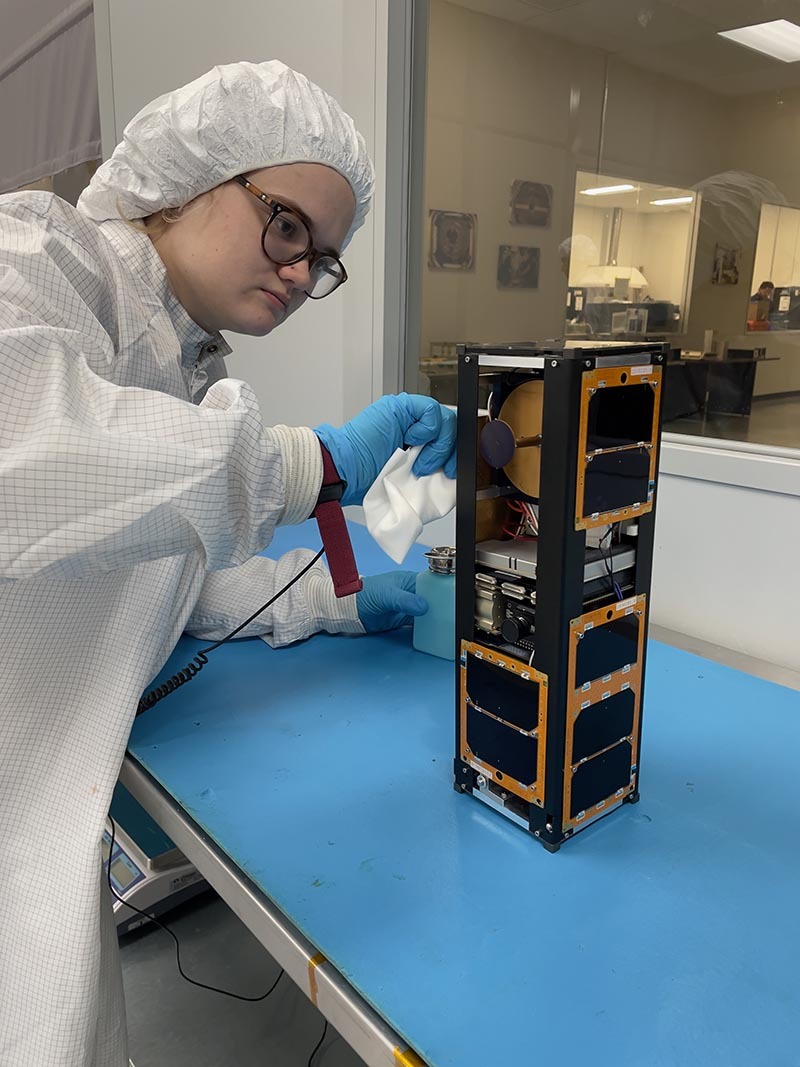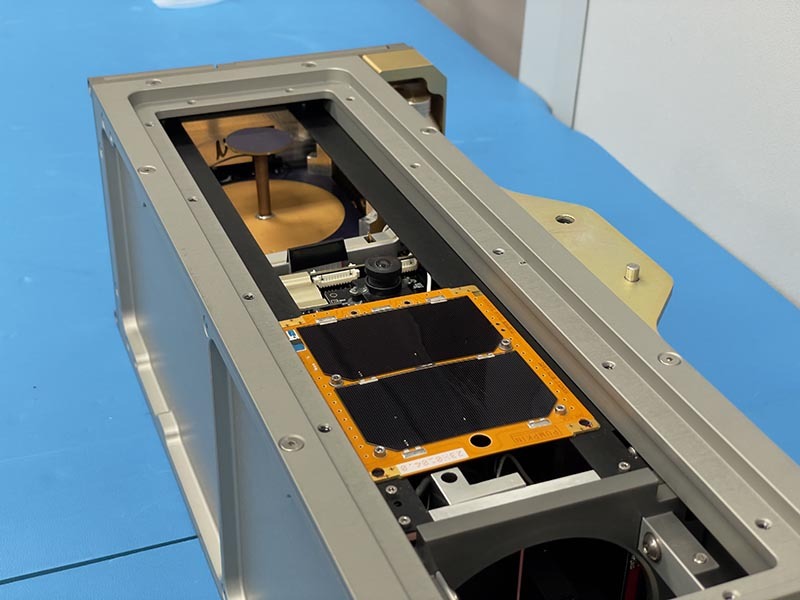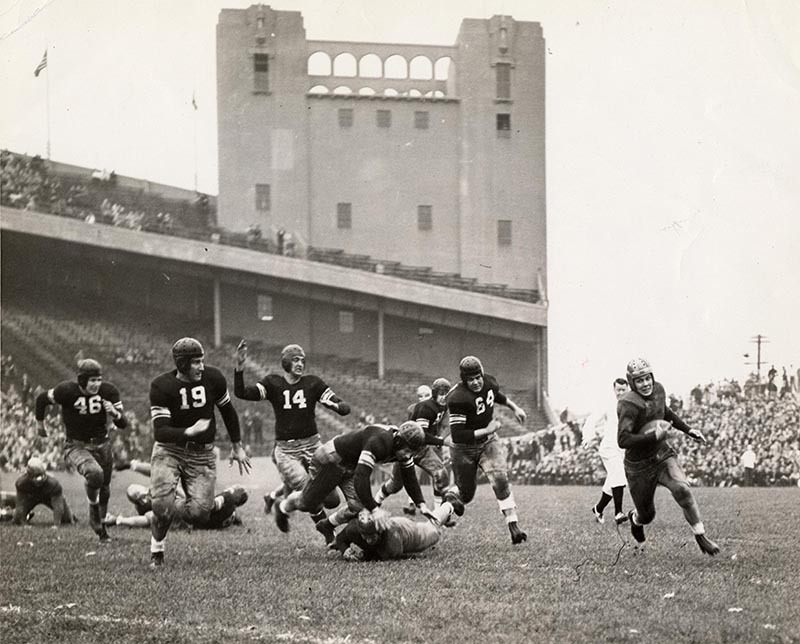Sensory friendly concert breaks ground for Wind Ensemble
Members of the ISU Wind Ensemble rehearsed earlier this week for their first sensory sensitive concert on Oct. 25. Open the video story to learn more about their intent and plans. Photo by Christopher Gannon.
The ISU Wind Ensemble will perform a special sensory sensitive family concert for a neurodiverse audience on Friday, Oct. 25 (5:30 p.m., Tye Recital Hall, Estes Hall). Admission is free, and audience members are welcome to express their delight and excitement at any moment during the concert without judgment. The 45-minute concert is a first-of-its-kind at the Simon Estes Music Hall.
Come early for another opportunity. Beginning at 5 p.m., percussion instruments will be available in room 102 Estes Hall to explore and play prior to the concert.
How to get ready for benefits open enrollment
With the benefits enrollment window for plan year 2025 just ahead -- Nov. 1-22 -- now is a good time to review your options and confirm you're choosing ones that work for you or your family. Faculty and staff enrolled in the university's health care plan have experienced the new cost-sharing requirements for about 10 months and should use that history as they make choices for 2025, said benefits director Ed Holland, university human resources.
No changes were made to covered health care services for 2025. The only change to the Wellmark plan options will be premium increases, between $12 and $66 per month for HMO participants, and between $11 and $97 per month for PPO participants. The university portion of all premiums is rising, too. The state Board of Regents approved the new premiums last month.
Shared healthcare premiums
|
|
Plan year 2025 |
Plan year 2024 |
|
Employees share |
12.8% |
11.9% |
|
ISU share |
87.2% |
88.1% |
Do your homework
An efficient way to stay on top of what your medical care is costing you is to register in the myWellmark portal or download the free app on your phone. This secure service is available 24/7 and helps you track the status of claims, your spending to date and progress toward deductible and out-of-pocket maximums. You also may access your Wellmark ID card or get started with 24/7 services such as BeWell (phone conversation with a live nurse) or Doctor on Demand (telehealth with doctors, psychiatrists, psychologists and therapists).
myWellmark's "spend report" function will generate a list of all the medical care received by selected family members in a designated time, including cost of services and your out-of-pocket costs. It doesn't include pharmacy costs or eyewear purchases. But it can be useful for those who would like that data to help set their 2025 contributions to a healthcare flexible spending account, a voluntary benefit that puts pre-tax payroll deductions into an account to pay for medical expenses during a plan year.
In addition, employees should review these useful resources on the ISU employee benefits website:
- The 2025 open enrollment page features an overview (35-minute video presentation or slide show), approved premium rates, summaries of health care, dental and pharmacy coverage, and the (optional) flexible spending accounts, Avesis eye care and group life insurance.
- The benefits education page is a table of content with links to Wellmark sites, informational flyers, more than a dozen 90-second videos -- generic vs. name-brand drugs, when telehealth is a good fit, how urgent care might save time and money, for example -- and ALEX, the free, interactive, comparison-shopping tool. ALEX is updated with 2025 plan information.
Websites offer lots of helpful information, but Holland said employees who prefer a 1-on-1 conversation could schedule time (phone, in person or virtual) with one of Iowa State's four benefits specialists, each of whom is assigned to a faculty-staff group by their last names. The Bookings app in Microsoft Teams will help employees make an appointment (virtual or in person). Find your benefits specialist on the 2025 open enrollment website (scroll to "meetings with benefits office staff.") They also can be reached via the UHR service center phone line, 294-4800.
Keeping costs down
Holland offered several suggestions for managing health care costs, starting with preventive care services. Under the federal Affordable Care Act of 2010, dozens of health care services (PDF) deemed "preventive" must be provided by network providers at no cost to plan participants -- not even a $15 office copay. On that list are annual wellness exams, immunizations and many kinds of health and mental health screenings, for example, a mammogram, colonoscopy, lung cancer screening or depression screening. For many, a focus on preventing deteriorating health is a cost-effective and smart strategy for managing their health.
For some care needs, including urgent care and mental wellness therapy, telehealth medicine is a good option, Holland said. Through Wellmark, ISU employees have 24/7 access to the Doctor on Demand service (90-second video summary). The site lists all the physical and mental health concerns its team can help with. There's no cost to create an account on the website or in the app for later use.
"We know there are concerns about access to behavioral health therapy, in just about every community and when our employees have exhausted their free care options in the employee assistance program," Holland said. "Doctor on Demand provides a good option."
A Cyclone satellite orbits Earth

Cy SAT team member Alexis Locati performs final checks on the cube satellite before it was launched into space. Photos courtesy Matthew Nelson.
In August, about 70 current and former Iowa State students raised their eyes to the sky and smiled when a dream of more than a decade became reality in outer space.
A Falcon 9 rocket launched from Kennedy Space Center in Florida on Aug. 9 with "Cy SAT" in its cargo. Cy SAT is an Iowa State student-designed and built 10- by 10- by 30-centimeter cube satellite that reached the International Space Station (ISS) where astronauts released it into low-Earth orbit -- about 280 miles above Earth -- at 5:45 a.m. on Oct. 8. It will spend the next several months orbiting Earth to collect soil moisture data.
Cy SAT, first conceived in the early 2000s, was constructed and tweaked by a rotating cast of students as part of the Make to Innovate (M:2:I) course and its precursors. The satellite is unique because it was entirely a student project, said Matthew Nelson, M:2:I director and aerospace engineering associate teaching professor.
"On average, we've had about 10 students per semester involved in the project," he said. "Other schools have had cube satellites launched, but they primarily concentrate on only the payload aspect."
M:2:I, where students earn course credit based on their project role, is an aerospace engineering program that engages students in hands-on projects to enhance their understanding of engineering fundamentals. Students build, break and learn from their failures, Nelson said.
A winding road to space
The Cy SAT project began through the Iowa Space Grant Consortium, which is headquartered in Howe Hall but includes the universities of Iowa and Northern Iowa and Drake University as core affiliates. It predates Nelson's arrival on campus in 2006.

A closer look at Cy Sat that was launched into space Aug. 9 and put into orbit on Oct. 8.
Nelson said students "got serious" about building a cube satellite in 2012, and after a few unsuccessful attempts, NASA accepted their proposal in 2018 as part of its CubeSat Student Launch Initiative.
"Our first two applications were denied before we worked with an alum at NASA who helped us develop our scientific purpose for the satellite," Nelson said. "Building a satellite is not a trivial engineering challenge, but it was a great learning experience for the students."
Students took on various roles over the years, including structural design, testing, rebuild and analysis. Six student project managers shepherded the satellite to completion, each learning valuable lessons along the way.
"It was a challenge and it is why in the M:2:I program we have such a strong emphasis on things like documentation," Nelson said. "Despite students' best efforts, there were times when there was some reinventing of the wheel because something wasn't documented properly as they were building and refining."
Nelson said seniors through freshmen worked on the project. A multitude of majors added their expertise, including aerospace, mechanical and electrical engineering as well as computer science, English, biology and meteorology. Through LinkedIn, he connected with former students who worked on the project to alert them to the launch. He said responses were a mix of pride and surprise.
The project was made possible largely with the help of $80,000 in donations through the ISU Foundation to help pay for the satellite. NASA covered launch costs.
On a mission
Cy SAT, on the same orbit as the ISS, should spend four to six months in space before falling out of orbit and burning up. Ideally, Nelson communicates with the satellite through an ultra-high frequency radio in Howe Hall. The hope is to have the satellite point its antenna toward Earth and begin measuring soil moisture when it is above the university.
"It will measure temperature brightness," he said. "If the soil is bright, then it's dry, and if it's dark, it's wet."
Attempts to get the satellite to point its antenna were unsuccessful as of Friday, but Nelson and others will keep trying. Cy SAT typically makes three passes each day through the area.
Future endeavors
Nelson is turning his focus to the next Cy SAT project and hopes to involve other Iowa Space Grant Consortium universities. He is encouraging the students to write a paper for an upcoming conference about the lessons learned along Cy SAT's development.
"It will be a great experience for everyone, and we can take those experiences and make a better next satellite," he said.
Iowa State may not leap to mind when thinking about the space program, but Nelson said he has at least six former students working for NASA and others with SpaceX, Northrup Grumman and other companies.
"It just shows how our students take these experiences with them past graduation," he said. "There are a lot of things we do in space that can impact our state."
Cyclones chase history

Iowa State's Everett Kischer carries the football in a game during the 1938 season. Photos courtesy of Special Collections and University Archives, University Library.
The Iowa State football team is 6-0 for the first time since 1938 and ranked No. 9 in the Associated Press (AP) poll this week. The 1938 squad won its first seven games before tying Kansas State and finishing 7-1-1.
The No. 9 ranking is the team's highest in the AP since a seventh position to open the 2021 season. The Cyclones remain perfect in Big 12 Conference play (3-0) after beating West Virginia 28-16 last week in Morgantown.
Iowa State returns to Jack Trice Stadium for another night game when it hosts the University of Central Florida (UCF) at 6:30 p.m. Saturday. UCF is 3-3 overall and 1-2 in the Big 12 Conference after losing at home to Cincinnati 13-19 on Saturday.
The game will be televised on Fox Sports 1 and available on the Cyclone Radio Network. Resale tickets are available through Ticketmaster.

The cover of the 1938 Homecoming football game program against Kansas. View the entire program.

